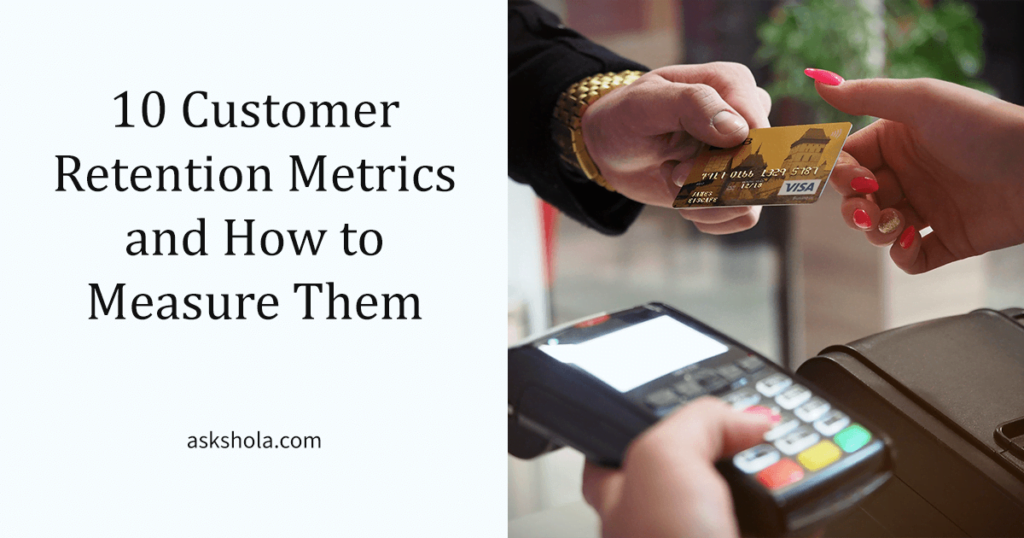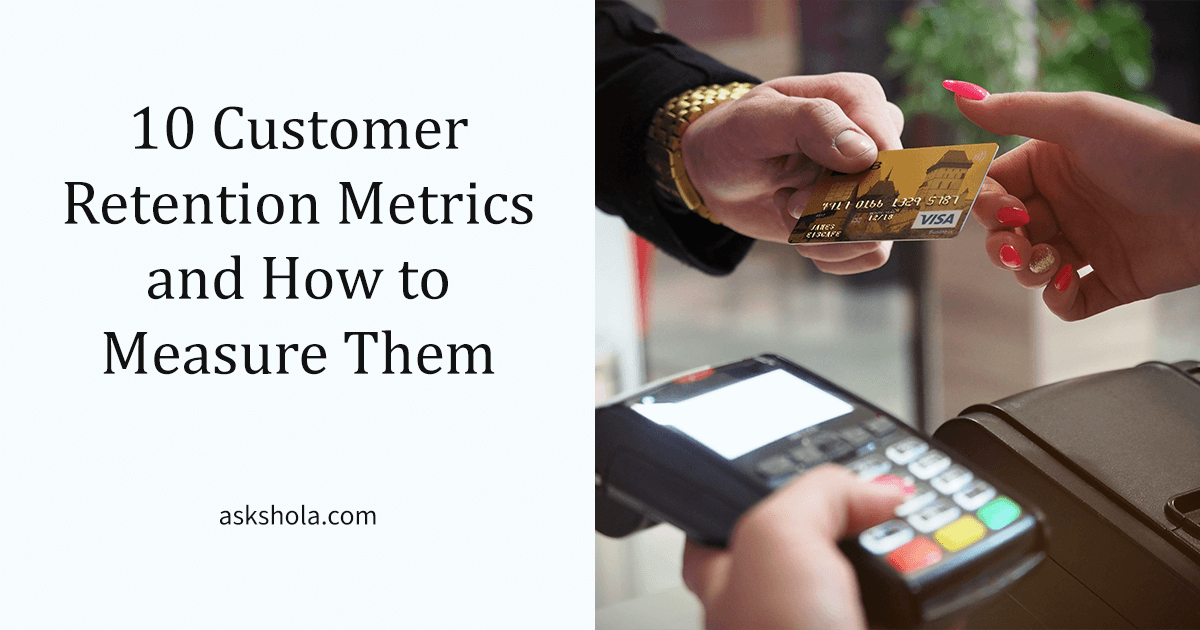10 Customer Retention Metrics and How to Measure Them

Customer retention is a crucial aspect of running a successful business. The cost of acquiring a new customer is much higher than the cost of keeping an existing one. In order to measure customer retention, you need to track certain metrics that can give you an idea of how well you are retaining your customers. In this article, we will discuss 10 customer retention metrics and how to measure them.
1. Customer Churn Rate
The churn rate measures the number of customers who stop using your products or services during a certain period of time. To calculate the churn rate, divide the number of customers who churned by the total number of customers at the beginning of the period. A high churn rate is a sign that you need to improve your customer retention strategies.
2. Repeat Purchase Rate
The repeat purchase rate measures the percentage of customers who make a second purchase. To calculate the repeat purchase rate, divide the number of customers who make a second purchase by the total number of customers. A high rate of repeated purchases suggests that your customers are satisfied with your products or services.
3. Customer Lifetime Value
The customer lifetime value measures the total amount of revenue a customer generates over the course of their relationship with your business. To calculate the customer lifetime value, multiply the average purchase value by the number of purchases made by the customer and the average customer lifespan. Customers who are loyal and buy from you repeatedly over time have a high lifetime value.
4. Net Promoter Score
The Net Promoter Score (NPS) measures how likely your customers are to recommend your products or services to others. To calculate the NPS, ask your customers how likely they are to recommend your business on a scale of 0 to 10. Customers who score 9 or 10 are promoters, those who score 7 or 8 are passive; and those who score 0 to 6 are detractors. To calculate the NPS, subtract the percentage of detractors from the percentage of promoters.
5. Customer Satisfaction Score
The Customer Satisfaction Score (CSAT) measures how satisfied your customers are with your products or services. To calculate the CSAT, ask your customers to rate their satisfaction on a scale of 1-5 or 1-10. A high CSAT score suggests that your consumers are satisfied with your products or services.
6. Referral Rate
The referral rate measures the percentage of new customers who were referred to your business by existing customers. To calculate the referral rate, divide the number of new customers who were referred by the total number of new customers. A significant number of referrals suggests that your existing customers are satisfied with your products or services and are willing to recommend them to others.
7. Average Order Value
The average order value measures the average amount of money that customers spend on each purchase. To calculate the average order value, divide the total revenue by the number of orders. A high average order value indicates that your customers are willing to spend more money on your products or services.
8. Engagement Rate
The engagement rate measures how often your customers interact with your business. To calculate the engagement rate, divide the number of interactions by the total number of customers. A high rate of engagement shows that your customers are interested in your business.
9. Customer Loyalty
Customer loyalty measures how likely your customers are to continue doing business with your company. To measure customer loyalty, you can use surveys or other methods to ask your customers about their likelihood to return to your business. A high customer loyalty rate indicates that your customers are satisfied with your products or services and are likely to continue doing business with you.
10. Customer Retention Cost
Customer retention cost measures the total cost of retaining customers. To calculate the customer retention cost, add up all of the costs associated with retaining customers, such as marketing, discounts, and loyalty programs, and divide it by the total number of retained customers. A low customer retention cost indicates that your customer retention strategies are cost-effective and efficient.
Now that we have discussed the 10 customer retention metrics and how to measure them, let’s look at some ways to improve your customer retention strategies.
Customer Retention Strategies.
1. Offer excellent customer service.
Providing excellent customer service is one of the most important ways to retain customers. When customers feel valued and heard, they are more likely to continue doing business with your company. Make sure your customer service team is knowledgeable, friendly, and responsive to customer needs.
2. Reward loyalty
Rewarding customer loyalty is a great way to show your customers that you appreciate their business. Offer discounts, special promotions, or loyalty programs to incentivize customers to continue doing business with your company.
3. Personalize Your Communication
Personalizing your communication with customers can make them feel more connected to your brand. Use customer data to tailor your communication and marketing efforts to each customer’s needs and preferences.

Conclusion
In conclusion, tracking customer retention metrics is crucial for the success of your business. By measuring these metrics and implementing customer retention strategies, you can increase customer loyalty, reduce churn, and improve your bottom line. Remember to focus on providing excellent customer service, rewarding loyalty, and personalizing your communication to keep your customers engaged and satisfied.





